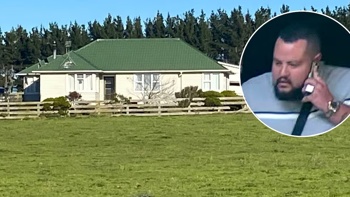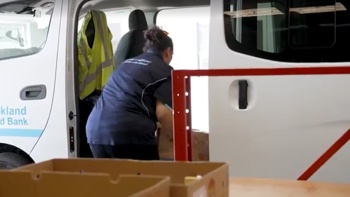Daisy the great white shark has arrived in the holiday hotspot of Mount Maunganui.
The 2.75-metre female shark has surfaced in the Tauranga harbour entrance between Matakana Island and Mauao/Mount Maunganui, according to new location tracking data via the Great White App.
Shark scientist Dr Riley Elliott received a Department of Conservation permit in June to track and satellite-tag 20 great white sharks, with the project allowing people to see where the animals are travelling through a live app.
The project is driven by funding and support from the public and is hosted by the Sustainable Ocean Society - a non-profit established by Elliot and a group of his friends.
Elliott tagged Daisy on December 3 inside Bowentown’s harbour - just north of Tauranga and close to the area off Bowentown beach where teenager Kaelah Marlow died after being bitten by a great white shark in 2021.
Daisy was the first shark tagged in Elliott’s project. Two weeks later she was detected off Hawai on the East Cape and now appears to be in Mount Maunganui.
/cloudfront-ap-southeast-2.images.arcpublishing.com/nzme/KQHDYL3QKVE5XEFPPMDHCKJSZY.jpg) Daisy the Great White Shark has been spotted in Mount Maunganui. Photo / The Great White App
Daisy the Great White Shark has been spotted in Mount Maunganui. Photo / The Great White App
In a Facebook post, Elliott said Daisy had made an “incredible journey”.
“She was first tagged inside the northern end of Tauranga Harbour, by Bowentown, and then was tracked to the eastern Bay of Plenty by the East Cape where she resided for some weeks in a very refined area, likely feeding on spawning schools of fish,” Elliott said.
“Now in a matter of days, she has returned to the Tauranga Harbour, this time through the southern channel beside the Mount. She is presumably learning the extent of her home range, which at present is determined by prey availability of fish and rays before she matures into a sun adult and may eventually migrate south to seal colonies.”
- 'Challenging endeavour': Scientist spots eight great white sharks during Bay of Plenty tagging project
- New great white shark research in Bay of Plenty
- Summer of the shark? Scientist's plan to upskill public on apex predator
- Surprising theory behind shark attack spike
/cloudfront-ap-southeast-2.images.arcpublishing.com/nzme/7QT22RVA5BA7TJUWJRXSB3IPTU.JPG)
Elliott told the Bay of Plenty Times the intention of the app was to track the movements of sharks, however, he also wanted to make the information available to the public.
As a surfer, Elliott said, “you’d almost rather not know”.
However, he said: “I know that there would be mums... that would be grateful to understand the movement of these animals when their kids go swimming.”
“It’s not about the fact the sharks are going to do anything, it’s about the fact that this information is available and if I didn’t share it, and God forbid something happened, that would’ve been the wrong thing to do.”
Elliott said it was important to be aware of these animals to avoid “adverse” situations.
“We’re sharing the water with these animals and this is an example of where this shark is just doing what a shark does... they hunt fish.”
/cloudfront-ap-southeast-2.images.arcpublishing.com/nzme/CMFUP5NDAFB3VBJSF52WSEKPNY.JPG)
Asked if Daisy was likely to stay in Mount Maunganui or move on, Elliott said: “It’s the beauty of the science - it’s all the unknown.
“This is the first time we’ve ever tagged sharks in this region - it’s some of the first data we’ve got from great whites in the North Island.”
Over time and as more sharks were tagged, the app would reveal “actual habitat hotspots for these animals which is great for us to calibrate our recreation against”.
It would also help focus on conservation efforts, he said.
According to the app website, the location accuracy of the tracked sharks ranged from 250 metres to several kilometres, depending on how long the tag was above water. The longer it was out, the more accurate the fix from satellites.
This meant sharks could sometimes appear to be on land in the app.
Eastern region Surf Lifesaving manager Chaz Gibbons-Campbell said lifeguards were monitoring the app and had been getting a lot of questions from swimmers about Daisy.
However, he said: “It’s not our app.”
He said lifeguards had made a few shark sightings along Western Bay beaches this summer.
In November, the Coroner recommended more research and monitoring of great white sharks after Marlow’s death.
The 19-year-old died after being bitten by a great white shark at the southern Bowentown end of Waihī Beach on January 6, 2021.
The coroner’s report, released in November, said attacks by great white sharks were rare but almost always fatal.
- For more information about the app visit sustainableoceansociety.co.nz or report great white shark sightings to [email protected]
Take your Radio, Podcasts and Music with you









